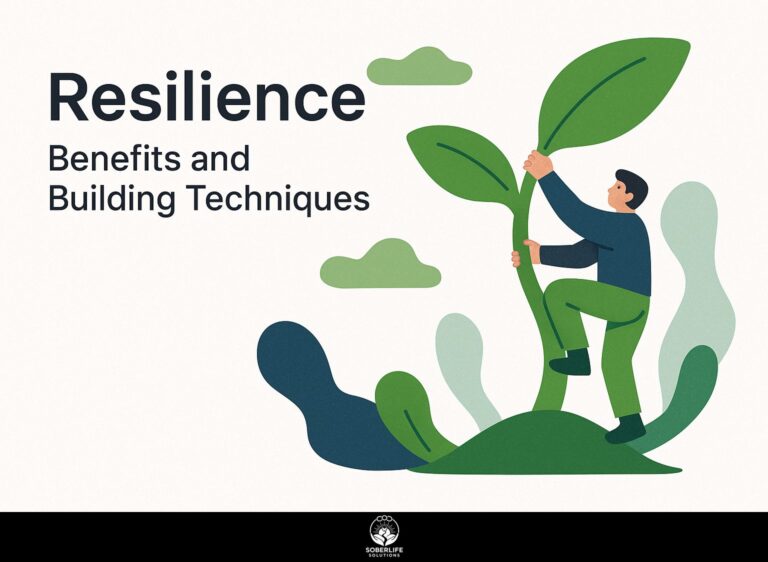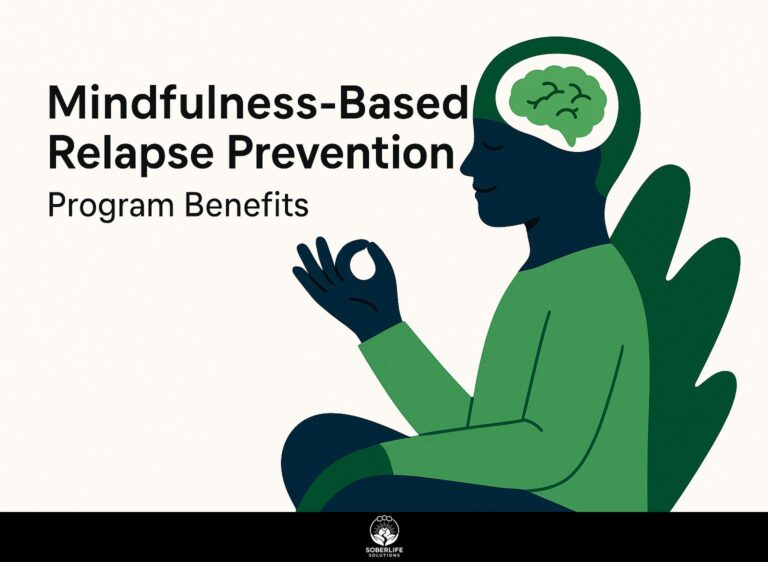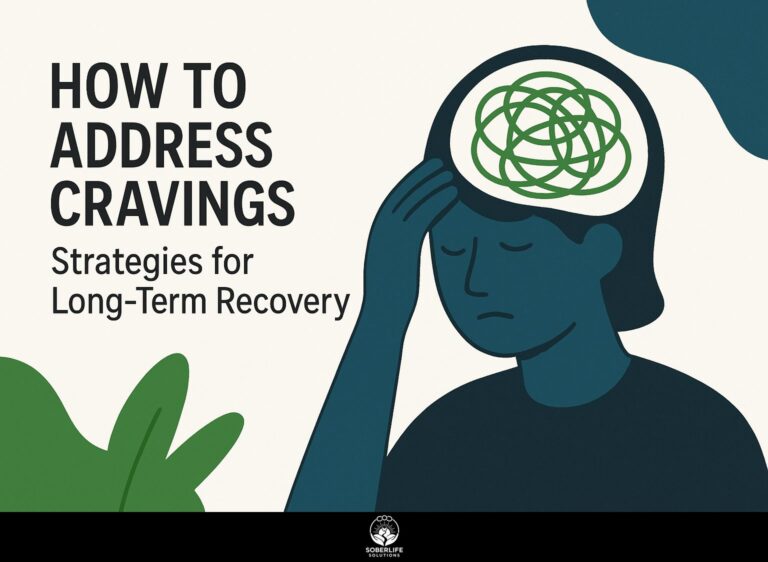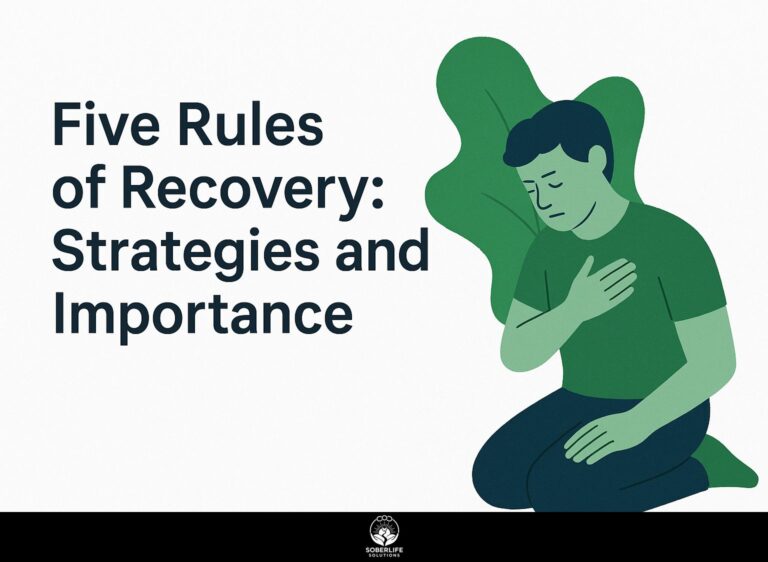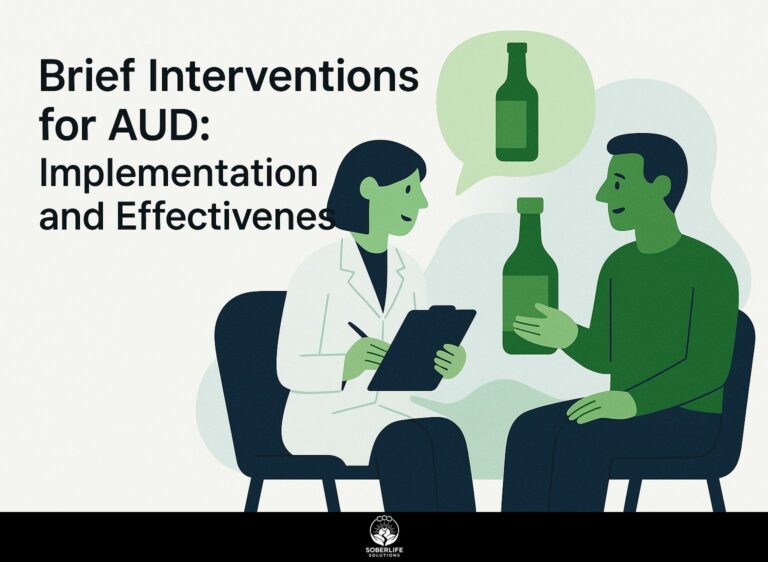Peer Support Networks: Importance for Recovery
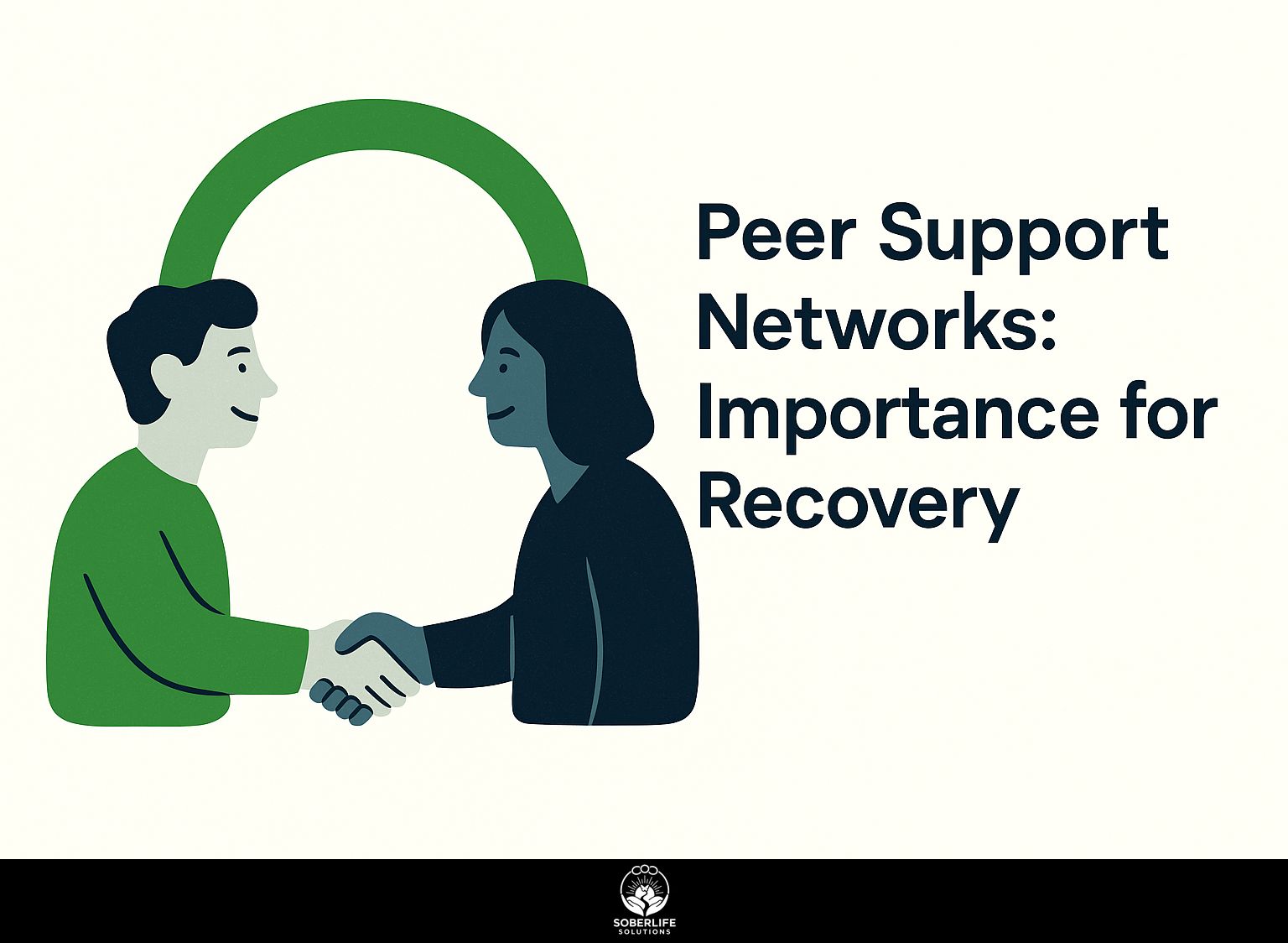
Support from others going through similar experiences is important for people recovering from substance use problems. These helpful groups improve addiction treatment and support positive mental health results. By sharing personal stories and offering emotional support, peer support helps people feel connected, which can greatly reduce the difficulties of recovery. In this article, we’ll discuss the importance of peer support and how it can change lives during the path to recovery.
Key Takeaways:
Definition and Overview
Peer support services encompass a range of programs that facilitate connections among individuals facing similar challenges, such as addiction and mental health issues.
These networks offer critical emotional support and practical guidance during recovery.
For instance, Alcoholics Anonymous (AA) provides a structured approach through its 12-step program, allowing individuals to share experiences and learn from one another. In the same way, Narcotics Anonymous (NA) helps people stop using drugs by building a sense of community. For context, Wikipedia offers a comprehensive overview of Alcoholics Anonymous, detailing its history and impact on addiction recovery.
Participants often feel comfort and encouragement in these settings, which can greatly improve their recovery process. [Learn more](https://soberlifesolutions.com/recovery-communities-support/) about how recovery communities provide critical support and foster connections among members.
Participating in these groups encourages responsibility and helps build a feeling of connection, which is important for lasting success.
Historical Context
The evolution of peer support networks can be traced back to the establishment of 12-step programs in the 1930s, which laid the groundwork for modern support systems.
Over the decades, peer support has expanded into various methodologies. In the 1980s, community reinforcement approaches emerged, emphasizing positive behavioral changes through social support.
Significant studies, like those by Miller and Rollnick on motivational interviewing, further validated the effectiveness of peer interventions. Programs like Mental Health First Aid use trained peers to give important help, a model similarly discussed in a piece by the British Medical Journal about motivational interviewing and its key stages.
These developments show a move towards using personal experiences along with expert advice, building a model that covers different recovery needs.
The Role of Peer Support in Recovery
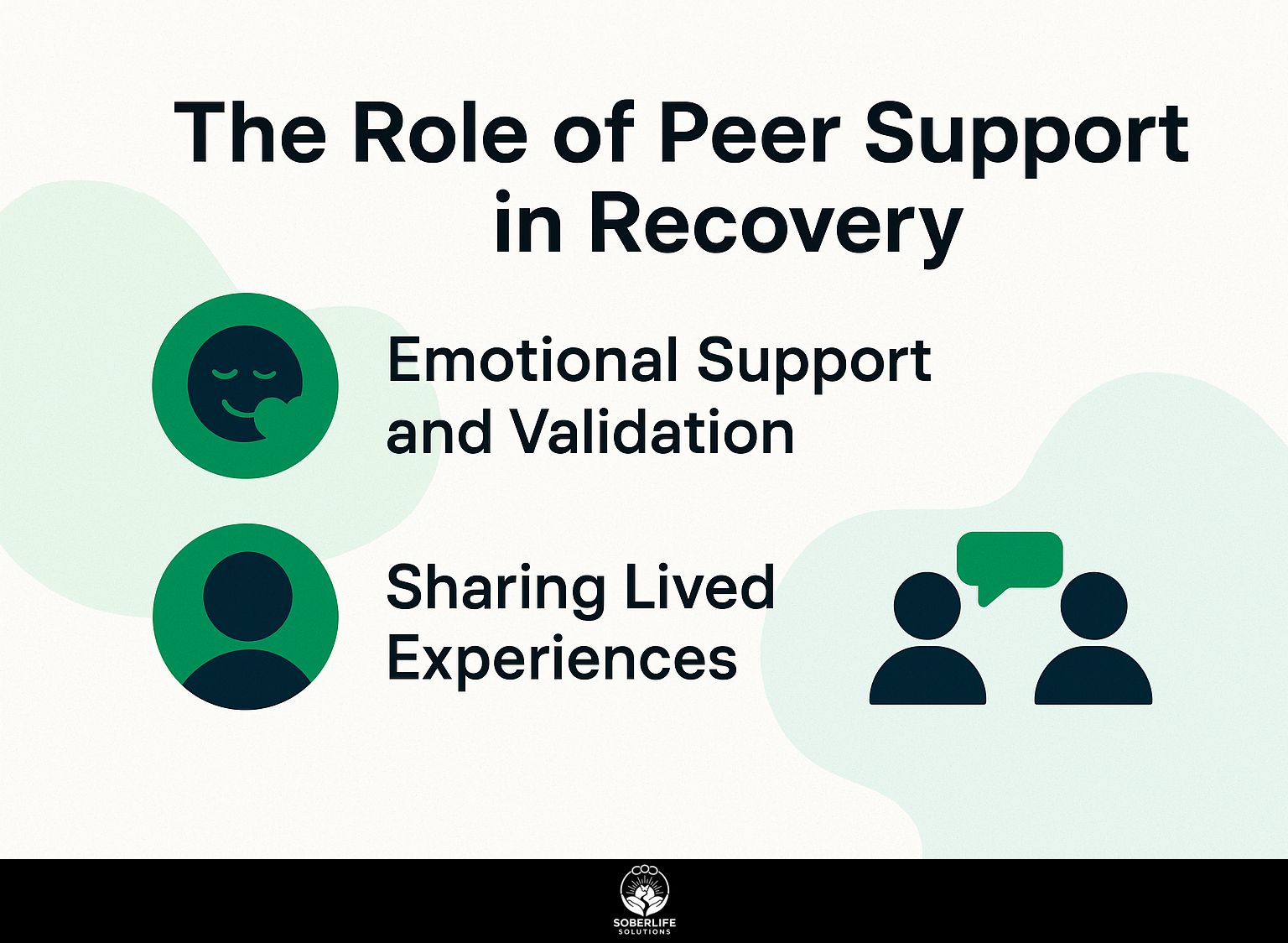
Support from peers is very important in recovery. It provides emotional support and shared experiences that help people dealing with addiction to become stronger. Related insight: read about the History of Peer Support: Origins and Impact to understand its evolution and significance in aiding recovery.
Emotional Support and Validation
Help from friends can greatly improve confidence, allowing people to handle the difficulties of overcoming addiction more successfully.
Research indicates that peer mentorship programs, like those offered by Alcoholics Anonymous (AA), provide essential emotional validation.
In one study, participants in a peer-led group reported a 30% increase in their treatment engagement compared to those without such support. This reinforcement often results in better ways to handle challenges and improved confidence, essential for recovery.
Sharing personal experiences in safe environments builds community trust, allowing connections that lead to open discussions about challenges. This helps individuals stay committed to their recovery.
Sharing Lived Experiences
Sharing lived experiences among peers can create a sense of belonging and reduce feelings of isolation, which are common in substance use disorders.
When people talk about their experiences in support groups like Cocaine Anonymous, it builds trust and promotes honesty. Research indicates that peer-led groups improve treatment retention rates by over 45%.
These sessions allow individuals to relate to one another’s struggles and triumphs, creating powerful connections. Using tools like shared storytelling and guided discussion topics can improve these interactions.
The ‘Story of the Week’ format encourages members to share their ideas. This boosts involvement and helps create a positive atmosphere.
Benefits of Peer Support Networks
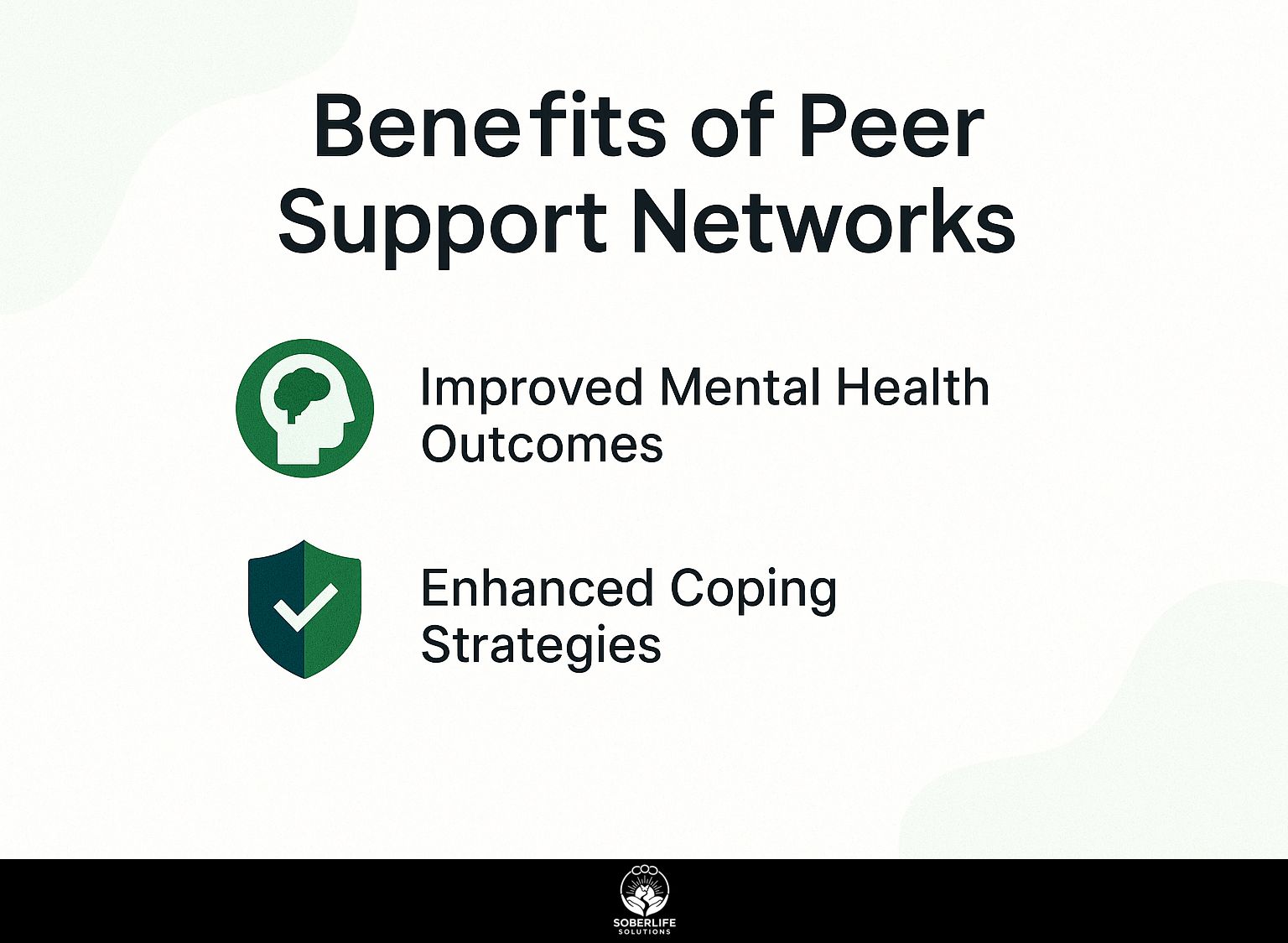
Peer support networks provide significant benefits, such as better mental health and improved ways to handle challenges for people recovering from addiction. These networks play a crucial role in recovery, as they offer a sense of community and shared experience, which can be explored further in our comprehensive guide on peer support groups.
Improved Mental Health Outcomes
Research indicates that individuals engaged in peer support programs experience a 25% improvement in mental health metrics compared to those who do not participate.
Research published in the Journal of Mental Health showed that people experienced lower depression and anxiety levels after attending a peer support group for eight weeks. Specifically, 40% of participants noted a significant reduction in anxiety scores, while a 35% decrease in depressive symptoms was observed.
Tools for implementing peer support include:
- Structured group sessions
- Online forums
- One-on-one check-ins
By promoting the exchange of personal stories and ways to handle challenges, these programs help build strength and improve emotional health. A systematic review and meta-analysis published by Cambridge University highlights the effectiveness of peer support for individuals with mental illness, further supporting these findings ( Cambridge University).
Enhanced Coping Strategies
Peer support networks equip individuals with effective coping strategies that can reduce relapse rates by up to 30% when integrated into treatment programs.
These networks facilitate sharing of personal experiences, allowing participants to learn resilience techniques that others have successfully used.
For example, Alcoholics Anonymous provides a setting where members talk about what causes them to drink and how they handle these urges, which helps them better understand and take responsibility.
Studies show that people in these support groups experience better mental health. They get emotional help and learn practical ways to handle daily problems.
This two-part advantage shows how important these groups are in supporting lasting recovery.
Types of Peer Support Networks
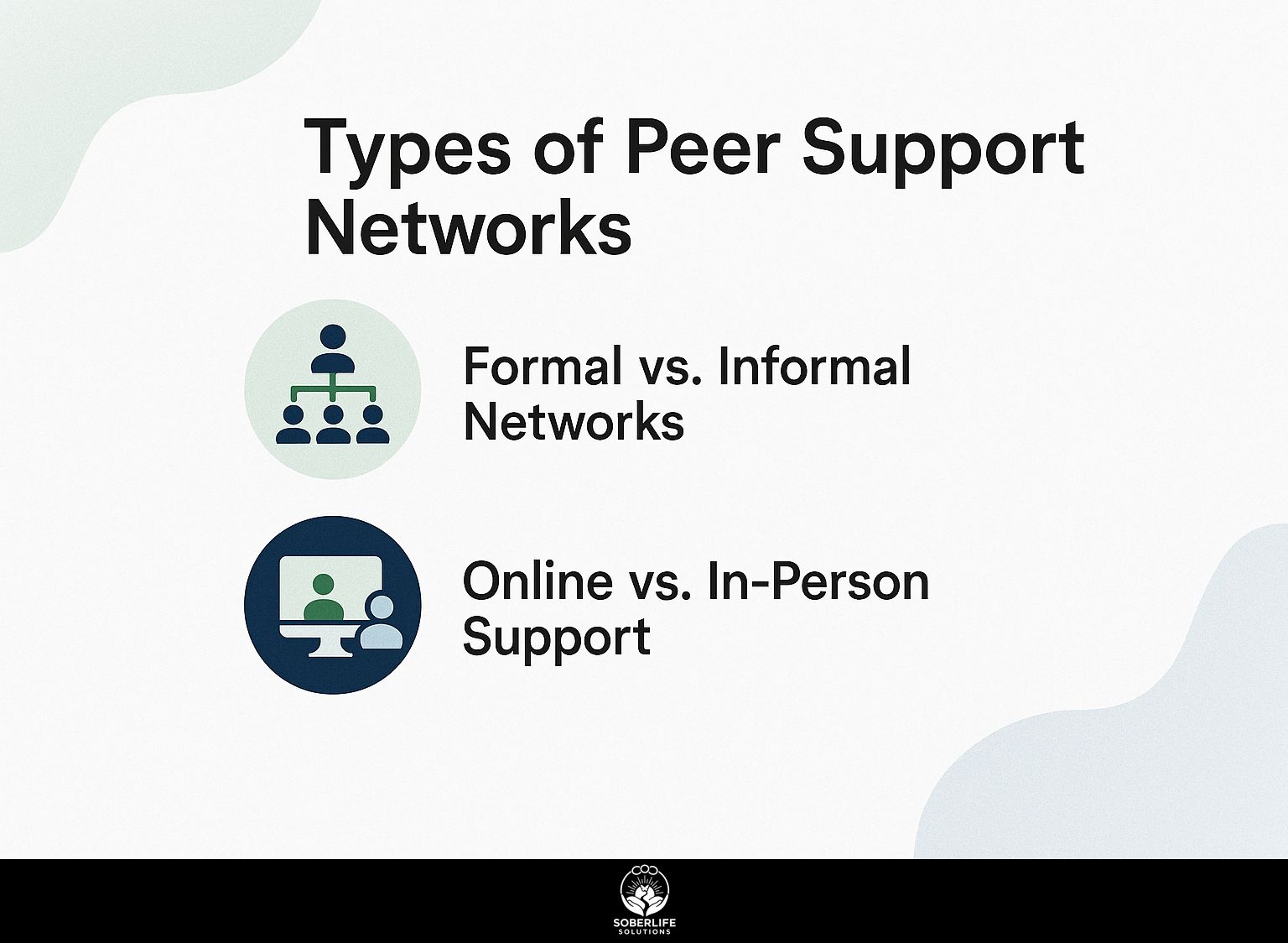
Peer support networks can be divided into two types: formal and informal. If you’re interested in how these networks function within different environments, our detailed exploration of Peer Support Settings: Hospitals, Schools, Community Centers provides valuable insights.
Each type plays an important role in the recovery process.
Formal vs. Informal Networks
Formal peer support networks, often organized by agencies, provide structured programs, while informal networks rely on community and personal connections.
Formal networks, like structured support groups, usually offer trained facilitators, set meeting times, and a predefined agenda. For example, a mental health group might hold weekly meetings that address particular topics, encouraging responsibility and providing expert advice.
In contrast, informal networks, such as casual meetups at local cafs, prioritize flexibility and personal rapport. These interactions may lead to stronger bonds but lack the accountability provided by formal settings.
The choice between these types depends on individual preferences for structure versus spontaneity, impacting the level of support one might receive.
Online vs. In-Person Support
Digital platforms have changed how people connect for support. Now, individuals can join support groups online or attend face-to-face meetings, depending on what they prefer.
Online platforms such as Reddit offer privacy and are always available, allowing for a wide variety of conversations. For example, the subreddit r/stopdrinking boasts over 40,000 members actively sharing experiences.
On the other hand, in-person support groups provide the benefit of direct interaction, which can strengthen personal bonds. Studies indicate that online engagement can be just as effective; participants in virtual forums often report similar feelings of support and community.
In the end, you should choose between online and in-person support based on what makes you comfortable, how easy it is to access, and how you prefer to interact.
Challenges and Limitations
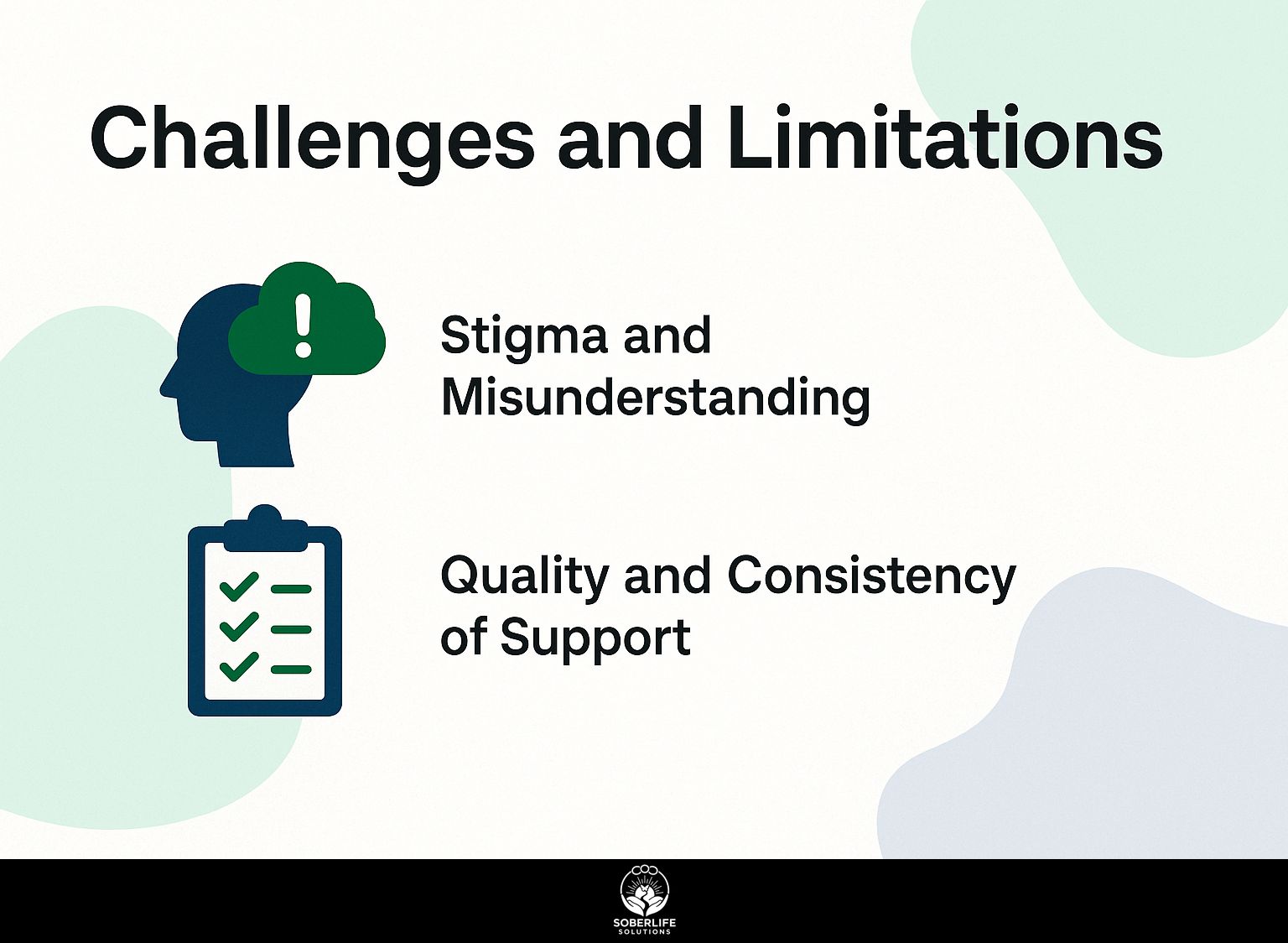
Peer support networks have advantages, but they also encounter difficulties like stigma and differences in the quality of help they offer.
Stigma and Misunderstanding
The negative perceptions about addiction can cause confusion about the benefits of peer support, preventing people from asking for help.
To combat this stigma, outreach strategies must include educational campaigns that humanize addiction and highlight recovery successes.
For example, groups like Facing Addiction with NCADD use social media to share personal stories, creating empathy and awareness. Workshops and community meetings can also facilitate open discussions, allowing individuals to express their concerns and learn from peers.
Partnering with local influencers to spread positive narratives can further diminish negative perceptions. Real-life experiences demonstrate that reducing stigma increases participation in peer support programs, leading to improved recovery outcomes.
Quality and Consistency of Support
Differences in how support is provided can weaken how well peer networks work, so it’s important to set clear standards and practices.
To maintain quality control, implement structured training sessions for peer mentors that cover active listening, empathy, and evidence-based intervention strategies.
For instance, utilizing role-playing scenarios can help mentors practice responding to various situations.
Set up routine meetings where mentors can talk about issues and exchange solutions, creating a team-focused atmosphere.
Adding feedback loops, where mentors get helpful comments from colleagues and supervisors, leads to ongoing progress.
Using standardized evaluation tools to assess mentor performance can help maintain consistency across the network.
Implementing Effective Peer Support Programs
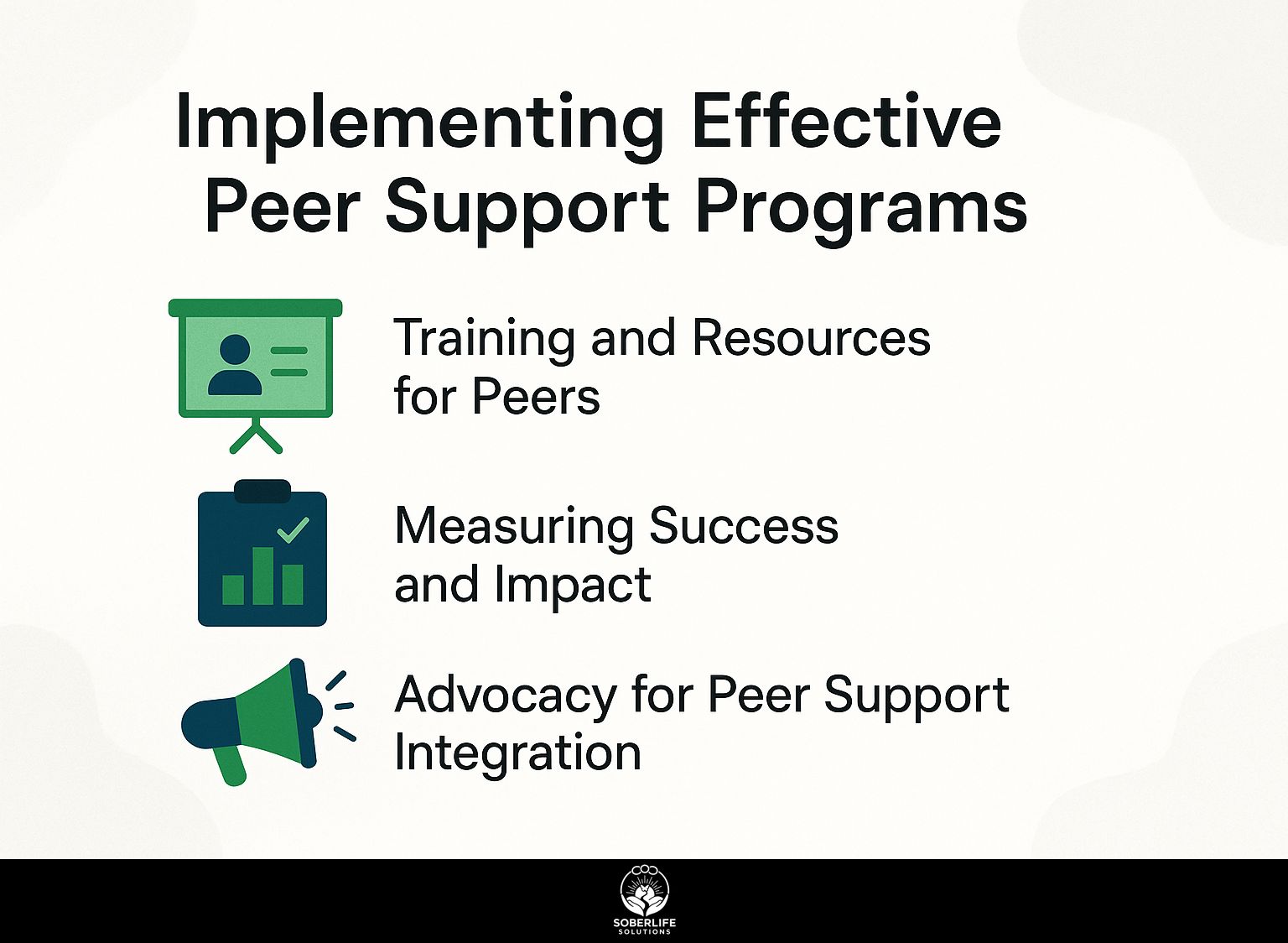
Setting up successful peer support programs needs thoughtful organization, such as preparing peer helpers and providing the right resources. For those interested in formalizing these preparations, exploring peer support certification and training can be a critical next step.
Training and Resources for Peers
Training programs for peer support providers should encompass essential skills such as active listening, empathy, and crisis management techniques.
For effective training, consider programs with parts like `Mental Health Basics’ (3 hours), which helps providers identify signs of distress, and `Communication Skills’ (2 hours), focusing on active listening and non-verbal signals.
The National Alliance on Mental Illness (NAMI) provides certification with detailed materials and training sessions. The Mental Health First Aid program features an 8-hour interactive session that covers crisis response.
These structured trainings give peer support providers the skills and methods needed to help others well.
Measuring Success and Impact
To check how well peer support programs work, organizations can use measures like how many participants stay involved and feedback from participants.
It’s important to monitor how many successful referrals are made to clinical services, as this shows how well the program connects peer support with professional treatment.
Tools like SurveyMonkey can facilitate gathering feedback through structured surveys. Employing data analytics platforms, such as Tableau, can help visualize trends in retention and engagement over time.
Successful addiction treatment programs usually show progress by regularly assessing their methods, enabling them to change and improve their strategies based on clear results.
Advocacy for Peer Support Integration
Including peer support in official treatment can lead to better recovery outcomes and reduce the negative perception associated with addiction.
To effectively advocate for this integration, collaborate with local health organizations such as the Substance Abuse and Mental Health Services Administration (SAMHSA) and participate in community advocacy events.
Lobbying for policy changes can include organizing local campaigns, talking with policymakers, and sharing success stories.
For example, the Faces & Voices of Recovery campaign has effectively increased awareness and influenced policy changes, leading to more funding for peer support services in multiple states.
Use social media to spread your message and engage with people who share your views.
Frequently Asked Questions
What are peer support networks and why are they important for recovery?
Peer support networks are a group of individuals who share similar experiences and provide support, guidance, and encouragement to one another. They play a key role in recovery by providing a community, empathy, and optimism to people facing the same difficulties.
What are the benefits of being a part of a peer support network?
Being a part of a peer support network can provide emotional support, reduce feelings of isolation, increase self-confidence, and offer practical advice for managing challenges. It can help build a sense of togetherness and give chances for personal development.
Can anyone join a peer support network?
Yes, anyone can join a peer support network. These networks are open to individuals who are dealing with mental health challenges, substance use disorders, physical disabilities, or other difficult life experiences. They are also open to family members and friends of those going through these challenges.
What types of peer support networks exist?
There are various types of peer support networks, including in-person support groups, online forums and communities, one-on-one peer mentoring, and peer-led educational programs. Each type offers unique benefits and individuals can choose the one that best suits their needs and preferences.
How can peer support networks aid in recovery?
Peer support networks can aid in recovery by providing a sense of hope, motivation, and accountability. They can also offer practical advice and coping strategies, as well as serve as a safe space for individuals to share their experiences and feelings without fear of judgment.
Are peer support networks a replacement for professional treatment?
No, peer support networks are not a replacement for professional treatment. Although they can be helpful, they should not replace therapy or medication. It’s important to get advice from a professional to make a detailed treatment plan that fits your needs.

